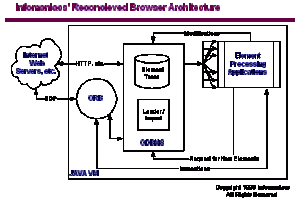
Application failures are a certain part of their development. Every developer has faced some errors that crop up as we move forwards. But wouldn’t it be better if the abnormal were detected in real-time and you were warned? Even better, if you could find out what went wrong and where? Luckily, Java Developers from India have quite a few abnormal tools that can help course true in time.
Top Five Java Anomaly Detection Tools
1) X-Pack
An extension of Elastic Stack, X-Pack is necessarily a security characteristic. It works by monitoring logs for data. It monitors, alerts, and reports on the behavior of the logs. It uses machine learning algorithms to monitor log behavior and flag any unusual behavior. The X-Pack also has graph capabilities, using metrics to illustrate user behavior.
It creates a basic behavior pattern by studying data from Elasticsearch logs. The logs are, in turn, culled from servers and applications. The data shows us trends and usage patterns. Any deviation from the pattern helps predict the onset of a problem.
X-Pac is also fantastic easy to install. With Elasticsearch 5.0.0, whenever you install X-Pack, you automatically get access to Watcher, Marvel, and Shieldplugins. Moreover, you also do not have to worry about the plugin version, since it now comes with the X-Pac. With a default detection feature, X-Pac has also tightened user authority. Keep in mind that X-Pac is necessarily an ELK tool and is well-integrated in its architecture. However, it is not as effective if you are out of ELK.
2) Loom Systems
Powered by AI, Loom Systems use log analysis to compare and predict issues that can crop up in the development of an application. It automatically takes logs from applications and breaks them down according to different fields. The parsing of any streamed log is automatic. The AI function then compares the events between different applications, exposing any issues and helping in the prediction of anomalies.
The data is examined according to the field type. The advantage of Loom Systems is its usage of AI to pinpoint the root cause in real-time, allowing you to take corrective action in time. It uses the organizational database to explain the anomaly and provide you with recommended solutions. The Loom also ensures that the baseline remains dynamic, changing as the standard user behavior changes.
The Loom system has many positives – its dynamic baseline that evolves with time, a superior analytic component that exposes flaws and makes us understand why it occurred, and its ability to provide you with an effective solution.
Must Read: Spring Micro-Services in Java
3) OverOps
So far we have only seen tools that detect errors in the log. But what you really need is the source of the error and what caused it. The answer lies in OverOps. Instead of logs, it focuses on the source code and the variable state that causes the error.
The OverOps scores because it is the only tool that focuses on code. It detects when and where a code breaks during the production process. Thus, it gives us a complete picture of the anomaly, helping us to pinpoint the instance it occurred in the code deployment.
It is also pretty easy to install, taking no time in SaaS, Hybrid, and On-premises. It can be hosted as a SaaS application, or deployed on-premises. You may even choose it simply for its uber-cool dashboard. It works with StatsD compliant tools for visualization of anomaly detection.
Working with the JVM, OverOps extracts data from the applications. It compares the variable state with the JVM metrics, showing application errors. OverOps also has a collaborative add-on, providing links for errors in the logs as well. The link takes you to the very cause of the error with the source code.
4) Coralogix
Coralogix uses AI to show segregate the logs into patterns and show their flow, giving us an insight in real-time. While mapping the production flow, Coralogix can instantly detect the moment an issue occurs, giving us precise insight.
Showing the original pattern in the log data also helps in the analysis of Big Data. It works on the assumption that most logs show similar patterns. The process brings out the big anomalies and not every small issue.
5) Anodot
Anodot uses AI to uncover blind spots. It uses patented machine learning algorithms to deliver BI. The company boasts of revolutionary BI that uses your metrics and applies machine learning to analyze the data. Anomalies are detected instantly and an alert is triggered.



